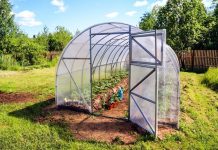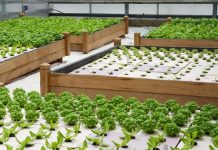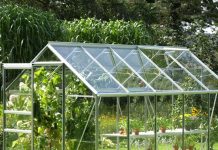 Greenhouse plants can develop several diseases in greenhouse environment.
Greenhouse plants can develop several diseases in greenhouse environment.
When left uncontrolled, these diseases can cause damage to the greenhouse plant growth.
As the diseases of plants are plagued by the elements of greenhouse, it is good to prevent the occurrence of plant diseases by managing the greenhouse environment in a good condition.
Greenhouse plant disease is generally prevented effectively by managing the following elements of the greenhouse environment:
Temperature: It is the primary element that affects the growth rate of greenhouse plants. In general, the warmer the temperature, the faster the plant’s growth rate will be.
As the rate of greenhouse plants growth depends on the temperature (from the day you plant the seed), a fluctuation in the temperature can cause plants to undergo stress or develop diseases whereby the greenhouse plant growth gradually decreases or gets damaged.
So, maintain the temperature in the greenhouse by placing air circulation fans or electronic thermostat. These equipments help control temperature levels essential for plant growth. This reduces greenhouse plant diseases and provides a healthier plant growth through moderate temperature.
Humidity: Like temperature, humidity levels also affect the greenhouse plant growth. The higher the humidity levels, the more the plants are susceptible to diseases.
An appropriate humidity for the greenhouse plants in the daytime is between 25-70%. A fluctuation in the humidity usually develops in the night and in winter and fall.
To control humidity levels in the greenhouse, always maintain enough space/gap between each plant. If plants are crowded altogether, the humidity level increases and thereby the rate of disease development also increases among greenhouse plants.
So, it is good to maintain proper air circulation within the greenhouse when humidity level becomes high. You can employ air-circulation equipment such as fan-jet or directional airflow systems.
Keep these systems running continuously when humidity increases in the greenhouse.
Greenhouse ventilation also reduces relative humidity. Usually in the evenings of the winter where cool air from the outer region enters into the greenhouse and raises the humidity to full percent (100%) and damages the plant growth by encouraging the disease development. However, closing the ventilation at evenings every day can reduce the problem.
Placing an exhaust fan can help eliminate warm moist air from the greenhouse in the late afternoons. It also replaces the warm air into cool moist air by allowing outside air into the greenhouse. This process controls the humidity levels as well as the disease development in the greenhouse plants.
Sanitation: Proper greenhouse sanitation can keep the greenhouse plants disease free and healthy. So, always keep the greenhouse clean and tidy. Prune the plants regularly. Remove the dried leaves and flowers away from the greenhouse.
Keep the plants free from debris by gathering and discarding regularly as early as possible. Leaving the debris near the plant region can cause fungal pathogen to develop and produce plant diseases.
Allowing improper or sterile less soil from outdoors into the greenhouse also increases diseases in the greenhouse plants. This is because several soil-borne pathogens can enter into the greenhouse through the soil. So, it is best to eliminate the soil-borne pathogens by sterilizing the soil.
As greenhouse plant diseases can spread easily through non-sterilized pots, used pots, contaminated tools, and dirty floors, proper care must be taken to prevent the disease spread.
Surface sterilization helps keep the greenhouse clean and thereby prevents the spread of the greenhouse plant diseases.
So, control these elements of environment and keep your greenhouse plants disease free!









Comments are closed.